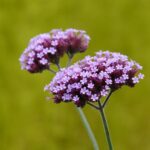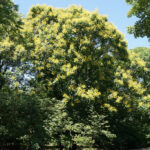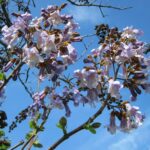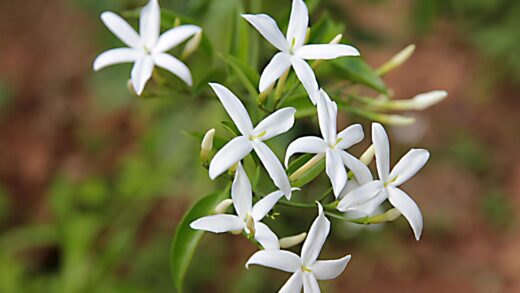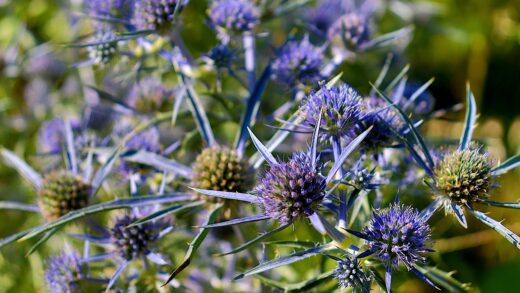Celery cultivation, whether for its root, stalks, or leaves, faces numerous challenges in the field of plant protection. A prerequisite for successful and profitable cultivation is a precise understanding of pathogens and pests, as well as an effective, integrated approach to controlling them. Diseases and pests can not only drastically reduce the quantity of the harvest but also significantly degrade its quality, storability, and market value. For this reason, preventive measures such as proper crop rotation, the selection of resistant varieties, and optimal agricultural techniques play a prominent role in the control strategy. Chemical interventions should always be applied in a targeted manner, based on accurate diagnosis and damage thresholds, to minimize environmental impact.
A significant portion of plant protection problems is related to cultivation conditions, so careful farming practices are inherently preventive. An overly dense plant stand, high humidity, and prolonged moisture on the foliage create ideal conditions for the spread of fungal and bacterial diseases. Unbalanced nutrient supply, especially an excess of nitrogen, also makes plants more susceptible to infections, while adequate levels of potassium and calcium increase their resistance. Against soil-borne pathogens, the most important control method is adherence to a multi-year crop rotation, avoiding the cultivation of celery and other Apiaceae plants (e.g., carrots, parsley) in succession. Prevention is therefore a complex system that extends from site selection to the management of plant residues after harvest.
Timely identification of pathogens and pests is crucial for effective control. This requires regular, thorough inspection of the crop, paying attention to the slightest changes on the leaves, stems, and root system. Early symptoms, such as leaf spots, yellowing, wilting, or growth abnormalities, can all be important signals requiring immediate intervention. In the case of pests, it is necessary to consider not only the direct damage (e.g., chewing, sucking) but also the indirect damage, such as the transmission of viruses. Modern plant protection aims not just for symptomatic treatment but for maintaining the balance of the entire agroecosystem for long-term, sustainable production.
Every element of cultivation technology affects the health of the plant. Proper irrigation, especially the use of drip or micro-sprinkler solutions that spare the foliage, can significantly reduce the risk of leaf diseases compared to general overhead irrigation. Weed control is also important from several perspectives: on the one hand, weeds compete with celery for water, nutrients, and light, and on the other hand, they can serve as hosts for many pathogens and pests (e.g., viruses, aphids), representing a source of infection for the crop. Minimizing damage during and after harvest is fundamental to preventing storage diseases such as bacterial soft rot.
The most significant fungal diseases
In celery cultivation, fungal diseases perhaps cause the most common and severe problems, resulting in significant yield loss and quality degradation. Warm, humid weather and prolonged moisture on the foliage are most favorable for these pathogens, so their infection must be anticipated, especially during rainy periods or with improper irrigation practices. The basis of control is prevention, which includes choosing resistant or tolerant varieties, ensuring proper plant spacing for good air circulation, and strict adherence to crop rotation. Fungicide treatments applied preventively or at the first signs of infection can also be essential in the fight against fungal diseases.
More articles on this topic
One of the most widespread and significant leaf diseases is Septoria leaf spot, caused by the fungus Septoria apiicola. The symptoms of the infection initially appear as small, yellowish-green spots on the leaves, which later enlarge, become irregular in shape, and their centers turn grayish or brown. Within these spots, tiny black dots, the fruiting bodies of the fungus (pycnidia), develop, from which spores spread with the help of raindrops or irrigation water. The disease can also be spread by infected seeds or plant debris left on the soil and, in severe cases, can lead to the complete death of the foliage, resulting in underdeveloped roots or stalks.
Another common leaf disease is Cercospora leaf spot, caused by Cercospora apii. Unlike Septoria, this disease prefers warmer, humid climates. The symptoms appear as larger, round or oval, grayish-brown spots with indistinct edges on the leaves, which do not contain the black pycnidia characteristic of Septoria. The centers of the spots may eventually fall out, and in severe infections, the leaf dries up and falls off, significantly reducing the assimilation surface. The pathogen overwinters on infected plant debris in the soil and infects the new crop from there the following year, so the destruction of crop residues after harvest is crucial.
Among soil-borne pathogens, Fusarium yellows and root rot (Fusarium oxysporum f. sp. apii) can cause the greatest damage, especially to celeriac. The infection occurs through the roots and spreads throughout the plant’s vascular system. The initial symptoms above ground are difficult to detect: the older, lower leaves begin to turn yellow, the plant is stunted, and wilting can be observed during hot daylight hours. The clear sign of the disease is a brownish or reddish-brown discoloration in the vascular bundles, visible when the root or crown is cut in half. Since the pathogen can remain infectious in the soil for years, the only effective control methods are a 4-5 year crop rotation and the cultivation of resistant varieties.
Challenges of bacterial and viral infections
In addition to fungal diseases, bacteria and viruses also pose a serious threat to celery crops, often causing difficult-to-manage and rapidly progressing problems. Bacterial infections typically enter the plant tissues through wounds (e.g., hail damage, insect bites, injuries from agricultural work), and their spread is facilitated by a wet, warm environment. Viruses, on the other hand, are mostly transmitted by various vector organisms, primarily aphids, and there is no direct chemical control against them, so the focus must be on prevention and combating the vectors. Controlling these pathogens also requires an integrated approach, with hygiene and prevention as its cornerstones.
More articles on this topic
Bacterial soft rot, most commonly caused by Erwinia carotovora (more recently Pectobacterium carotovorum) bacterial species, is one of the most devastating diseases of celery, especially during post-harvest storage. At the site of infection, the plant tissues become water-soaked, then mushy, and emit a characteristic, unpleasant odor. The disease can also appear in the field, mainly on plants weakened by injuries or other diseases, but its real damage is done in storage, where it can quickly spread from infected roots to healthy ones. The key to control is minimizing damage during harvest, thoroughly disinfecting the storage facility, and ensuring optimal, cool, and well-ventilated storage conditions.
Bacterial leaf spot (Pseudomonas syringae pv. apii) is another significant bacterial problem. The symptoms appear as small, water-soaked, dark green or black spots on the leaves, often surrounded by a yellow halo. The spots can merge over time, causing larger necrotic areas, which reduces the plant’s photosynthetic capacity and the market value of the crop. The pathogen is spread by infected seed, plant debris, and water droplets. The use of disease-free seed and irrigation techniques that reduce foliage moisture, such as drip irrigation, play an important role in prevention. Copper-based products applied preventively can help curb the spread of the disease.
Celery crops are threatened by several viruses, one of the most common being Celery Mosaic Virus (CeMV). The characteristic symptoms of the infection are mosaic-like, yellowish-green mottling on the leaves, vein clearing or darkening, as well as leaf curling and plant stunting. The virus is primarily transmitted by aphids in a non-persistent manner, meaning that the pest acquires the virus while feeding on an infected plant and can transmit it to a healthy plant almost immediately. Since viral diseases are incurable, control focuses on prevention: consistent reduction of aphid vectors, control of weeds around the fields (which can also be virus reservoirs), and the immediate removal and destruction of infected plants.
Animal pests in the celery crop
During celery cultivation, not only pathogens but also numerous animal pests can cause serious problems, threatening all parts of the plant from the root to the leaves. Their damage can be direct, such as tissue destruction caused by sucking or chewing, and indirect, such as transmitting viruses or excreting honeydew on which secondary pathogens, like sooty mold, can grow. Pest control is also a complex task that includes agrotechnical elements, harnessing biological control options, and targeted chemical interventions. For successful control, it is essential to know the biology of the pests and to regularly monitor the crop for early detection of damage.
Aphids (Aphididae) are one of the most significant and common pests of celery. These small, soft-bodied insects colonize the undersides of leaves and young shoots, where their sucking causes significant damage. As a result of their feeding, leaves become distorted and yellow, and plant growth slows down. Even more severe can be their indirect damage, as aphids are the main vectors of Celery Mosaic Virus and other plant viruses. In addition, they excrete large amounts of sugar-rich waste, known as honeydew, on which sooty mold grows, forming a black coating that inhibits photosynthesis and reduces crop quality. Control can be achieved by protecting natural enemies (e.g., ladybugs, hoverflies) and, if necessary, applying selective insecticides.
The celery fly (Euleia heraclei) is a specialized pest whose larvae, or maggots, cause the damage. The female fly lays its eggs inside the leaves, and the hatching larvae chew tunnels, or mines, between the two epidermal layers of the leaf. These mines initially appear as light, translucent patches, which later turn brown and necrotic, reducing the leaf’s assimilation surface and diminishing the market value of leaf or stalk celery. Control is based on monitoring the flight of the adult flies, for which yellow sticky traps can be used. Chemical control should be timed to coincide with the mass egg-laying period to prevent the larvae from penetrating the leaf tissue, as controlling the mining larvae is much more difficult.
Spider mites (Tetranychidae), especially the two-spotted spider mite (Tetranychus urticae), can multiply massively, particularly in warm, dry weather conditions. These tiny arachnids feed on the undersides of the leaves, causing small, yellowish-white dots to appear. As the damage progresses, the leaves turn a bronze hue, then brown, and dry out, and in severe infestations, the plant is covered with a fine, web-like webbing. Plants kept in dry, stressful conditions are more susceptible to spider mite infestation, so a balanced water supply is part of prevention. Control requires the application of specific miticides (acaricides), paying attention to avoiding resistance.
Among soil-dwelling pests, root-knot nematodes (Meloidogyne species) pose the greatest threat, especially in sandy, loose-textured soils. These microscopic worms attack the root system of celery, causing characteristic tumors, or galls, to form on the roots. The galls impede water and nutrient uptake, which manifests in the above-ground parts of the plant as stunted growth, yellowing, and wilting during the midday hours, even when soil moisture is adequate. Since it is difficult to control nematodes in an already established crop, the focus must be on prevention: adhering to crop rotation, using resistant varieties, increasing the organic matter content of the soil, and, in cases of severe infestation, soil fumigation may be the solution.
Integrated pest management and prevention strategies
Integrated Pest Management (IPM) is a complex, ecologically-based approach that seeks to keep pests and pathogens below the economic injury level in a manner that is sustainable for the environment and human health. This strategy does not aim for complete eradication but for regulation, prioritizing preventive agrotechnical and biological methods and resorting to chemical control only as a last resort and in a targeted manner. For celery, the application of an IPM system is particularly important, as the plant can be attacked by numerous diseases and pests, against which exclusively chemical control is not only costly and environmentally burdensome but can also become ineffective in the long run due to the development of resistance.
The foundation of successful integrated control is careful prevention, which begins with site selection and soil preparation. A field should be chosen that has good water management, is not prone to waterlogging, and where Apiaceae plants have not been grown in previous years. The quality of the seed or transplants is crucial; one should always strive to obtain certified, guaranteed disease-free propagation material. A balanced nutrient supply based on soil testing increases the natural resistance of the plants, whereas excessive nitrogen application makes them susceptible to diseases and aphid proliferation.
Crop rotation is one of the most effective and cost-efficient prevention methods, especially against soil-borne pathogens (e.g., Fusarium, Sclerotinia) and pests (e.g., nematodes). A break of at least 3-4 years should be maintained between the cultivation of celery and other Apiaceae plants, such as carrots, parsnips, or parsley, on the same land. After harvest, plant residues must be carefully incorporated into the soil or removed from the field, as they provide an overwintering opportunity for many pathogens (e.g., Septoria, Cercospora), serving as a source of infection for the next season.
A wide range of agrotechnical and biological methods can be used to suppress pests and diseases. Proper, not-too-dense plant spacing ensures good air circulation in the foliage, which inhibits the spread of fungal diseases. Preferring drip irrigation over overhead irrigation helps keep the leaves dry. Beneficial organisms, such as ladybugs, hoverfly larvae, or lacewings, which consume aphids, can be attracted and supported by minimizing pesticide use and planting flowering strips on the edge of the field. Biopesticides, such as Bacillus thuringiensis preparations against caterpillar pests, can also be integrated into the control program.
Chemical plant protection has only a corrective role in the integrated system, applied when preventive and biological methods are no longer sufficient to keep the damage below the economic threshold. Spraying must always be preceded by accurate identification of the pest or pathogen and proper timing based on forecasting. It is important to rotate products, i.e., to alternate active ingredients with different modes of action, to prevent the development of resistance. The instructions in the product’s registration certificate must always be followed, especially regarding the dose and the work and food safety waiting periods, to ensure that the harvest is safe and the environment is protected.







